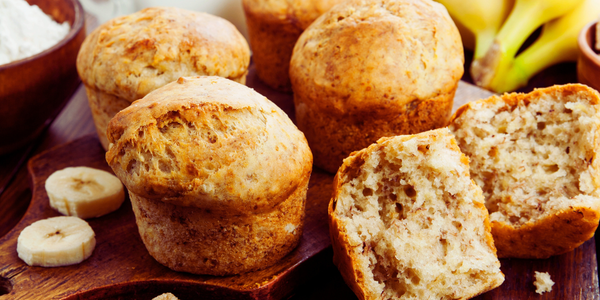Ever Been to India? Welcome Abroad
Have you been dreaming of visiting India someday? Or have you been drooling over the thought of a hot plate of authentic Indian curry with naan, straight from an Indian kitchen? Forget what you see in the news, India is an exceptional holiday destination.
Moreover, it is not all about curries and rotis. Not at all! The nation is rich in traditional culture and heritage, natural rivers and mountainous regions, clear sandy beaches and diverse wildlife. This is where buffaloes have been substituted cows for milk supply. Yes, milk is very important in Indian cuisine. Do you want to know more? Read on.
A Little History
India is a South Asian country whose name is derived from the famous Indus River. It is one of the oldest regions on earth to provide settlement according to history. In fact, historical and religious texts, which were written during the 5th century, talk of a powerful empire known as Bharata. Bharata dominated the entire Indian subcontinent and reigned with peace and accord (my tour guide insisted that I should write those specific words). During this era, the land was known as Bharatavarsha.
Today, India is the second most populated country with more than 1.2 billion people. In addition, according to statistics, the literacy levels among adults keeps on improving. Tourism is also on the rise. In 2016, the country earned a GDP of $208.9 billion from tourism alone. This is a significant rise from the $113.2 billion GDP in 2013. Enough about the history, let us move on to the juicy stuff; the tourist spots.
Places To Visit
Beaches
It’s always summer in India. The lowest recorded temperature around the coastal regions is 18°C. Moreover, when the sun gets hot, temperatures go up to 45° C and sometimes higher. Without a doubt, you can’t avoid the temptation of walking past the beaches without cooling off. On the West coast the regions of Goa, Gujarat, Kerala, Maharashtra, and Karnataka have vast beaches. And on the East coast, you’ll find beaches in Tamil Nadu, West Bengal, Pondicherry, Andhra Pradesh and Odisha.
Public beaches in India are quite crowded. However, they are ideal places to interact with the locals and make a few pen pals (or potential dates, wink.) Private beaches, on the other hand, offer exquisite experiences. Whichever the status, just blend in and have fun. My favorite beach is Radhanagar located on Havelock Island. Mostly because I get to taste a blend of India and Thailand. Secondly, the beach is less crowded. And finally, it has clear blue waters.
I visited Puri beach last summer, and I can vouch for it if you are a party lover. Music plays all night long, and the energy in the crowd is amazing. In addition, locals and tourists smoke Marijuana in broad daylight. Just to let you know, bhang is legal in this part of India. Ahem!
Goa is the most popular destination beach for foreign tourists. I’m sure you’ve also heard it mentioned. The beaches are pretty and definitely overcrowded with foreigners. You won’t miss a buddy or two from your hometown. Music is prohibited past 10 pm, so this is not the beach to visit if you love your jams. Finally, most of the Indian beaches have diverse accommodation options including guest houses, private villas, home stays, and luxury resorts.
Architecture
Of course, you can’t be in India and fail to notice their architectural splendor. Their old, once powerful cities, though now abandoned, are architectural masterpieces. Fatehpur Sikri, in Agra district, is the most eminent city that displays India’s architectural glory. The ancient ruins of Hampi are also very mesmerizing. Some of the Indian cities such as Delhi and Mumbai portray architectural magnificence. Mughal rulers have their remnants scattered in Delhi.
Mumbai, on the other hand, has some majestic colonial architecture exuding British influence. The beautiful mansions constructed by merchants who lived in the Shekhawati region of Rajasthan are significant architectural masterworks.
Wildlife and Landforms
India has extensive and diverse jungles. There are more than 120 national parks and more than 500 wildlife sanctuaries. Every national park has its distinctive scenery. For example, if you want to spot the Bengal tiger, you should visit smaller national parks like Ranthambore, Bandhavgarh, or Tadoba. These have the highest number of tigers. Kerala is rich in elephants. Be sure to visit the numerous bird sanctuaries or take a boat trip through the Sundarbans dense mangrove forest.
Concerning landforms, India is a mystical mountain destination country. Most of its landscapes are believed to have some spiritual influence. Indian snow-capped mountains are popular among tourists for their crisp atmosphere and thrilling adventurous activities. The state of Himachal Pradesh and the foothills of Himalayas are top spots. If you love fishing, visit the Pabbar Valley and try trout fishing.
Temples and Religion
India is also home to diverse religions. This explains the numerous eclectic temples found all over the country. These temples are also an excellent way to offer donations. Several homeless and needy people get fed in these temples every day. If you want to see the towering and intricate temples, visit the state of Tamil Nadu. Most of these temples reflect the Dravidian culture.
The Kapaleeswarar Temple in Chennai is among the most impressive, alongside the Meenakshi temple in Madurai. On the east coast is Odisha; another state with Hindu temples in its capital Bhubaneshwar. In Konark, you find the Sun Temple, which is famous for its impressive architecture and erotic monuments. Not forgetting the biggest of them all, Sri Ranganathaswamy Temple.
What to Eat:
To spice up your vacation, try some of these Indian traditional foods.
Gujiya (a traditional dessert). It’s packed like a samosa but has a unique shape. It’s simply a blend of condensed milk, coconuts, grated and roasted dry fruits, and a little coarse ground wheat flour (sooji). It is the perfect dessert.
Dossa (India’s staple food). This is a type of crepe made from fermented rice batter. It is traditionally served with Indian ghee, coconut chutney, and lentil based vegetable.
Roti; a simple unleavened flatbread made from wheat flour. Traditionally accompanied with Indian curry or used to make sandwiches.
Image credit: Pexels.com
Sign up for FD's newsletter
The freshest stories from the food and dating world every week.




